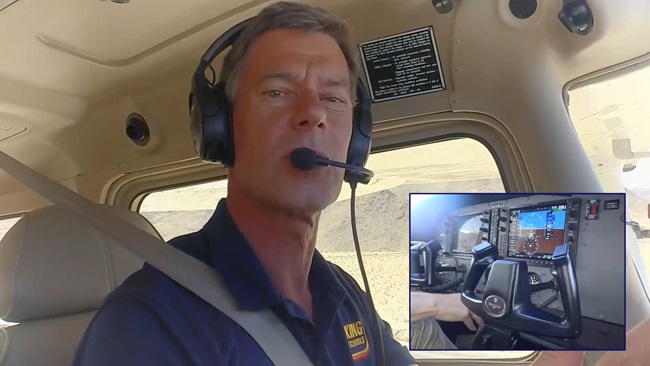Pilots often like to discuss the weather conditions in which they’re willing to fly. With the summer flying season approaching, it’s a good time to discuss this list and how we should decide what’s on it.
Before we go any further, we should frame the discussion by answering two simple questions. First, do you have “personal minimums” or weather criteria that help make go/no-go or divert decisions? Second, are your personal minimums (weather criteria, maximum crosswinds, minimum runway lengths, et cetera) written down and readily available for reference? I think I already know the answers. During safety discussions, I always ask these two questions. After a show of hands from thousands of pilots, here’s what I’ve found.
The majority of pilots answer the first question with a resounding yes: Of course they use personal minimums! The answer to the second is the polar opposite: Only about one in 20 pilots says he or she has written them written down. That’s unfortunate. Checklists are important to pilots because we’ve got a lot to keep track of. And the most important list to manage is the one that guides our decisions when things get iffy.
One example of how this might have helped is a mishap that occurred in September 2012. An instrument-rated private pilot was flying with his spouse in a turbocharged Mooney Bravo, an airplane capable of flying more than 200 knots and well into the flight levels. This pilot had more than 1,000 hours and a significant amount of time in type.
On a flight from Florida to Tennessee, the pilot was informed by air traffic control that along his route of flight there was a wide line of thunderstorms with reports of moderate to extreme precipitation. The pilot assured the controller that his ADS-B (FIS-B) weather gave him a good picture of the precipitation ahead and he’d be able to deviate to avoid the worst of it. Less than 10 minutes later, ATC received a nearly unintelligible radio call from the pilot declaring a mayday. Moments after this last radio transmission, the aircraft struck the ground. It had descended nearly 13,000 feet in under a minute.
As we read about these sorts of mishaps, it’s easy to Monday-morning quarterback and tell ourselves, I’d never do that. But accident statistics sometimes show otherwise. Anytime ATC reports weather conditions as “extreme,” this should set off alarm bells. In this case it didn’t, probably because this pilot was wrestling with his decision of whether to press on.
Our perceptions of the influencing factors change when our minds are busy with complex tasks such as piloting an aircraft or the desire to get to our destination. Astute decisions are much easier to make when sitting in a chair at 0 knots and 1 G, and while not preoccupied with flying. And that’s why writing down and using personal minimums is so important. If we rely only on feelings to guide our decisions, then during the heat of the moment our decision-making process becomes a mental negotiation clouded by emotion and hopes of a successful outcome.
Extreme weather conditions, as was the case here, should have been a clear sign to postpone the flight. If this pilot’s personal minimums were written down, it could have helped temper his overly optimistic view of the situation. Unless personal minimums are written down, they aren’t real and are open to interpretation. When personal minimums are written down, they become a non-negotiable contract with yourself, your passengers, and your family. With a contract in place, it’s much easier to fight off the temptation to mentally negotiate yourself into a tight spot.
Go/no-go/go-back decisions should never be based on a hunch, feeling, or guess. They should be based on prudent, deliberate thought, and made with a clear understanding of what your passengers are comfortable with and what the airplane and pilot are capable of. If your personal minimums are written down, and there’s ever a question about what you should do, read them over and re-cage your brain into making a decision that will build safety margins into the plan and keep you out of trouble. The AOPA Air Safety Institute is here to help. See ASI’s Safety Spotlight on this topic and download a personal minimums contract to fill out. It’s in the best interests of safety!
Email [email protected]
George Perry is senior vice president of the AOPA Air Safety Institute.


